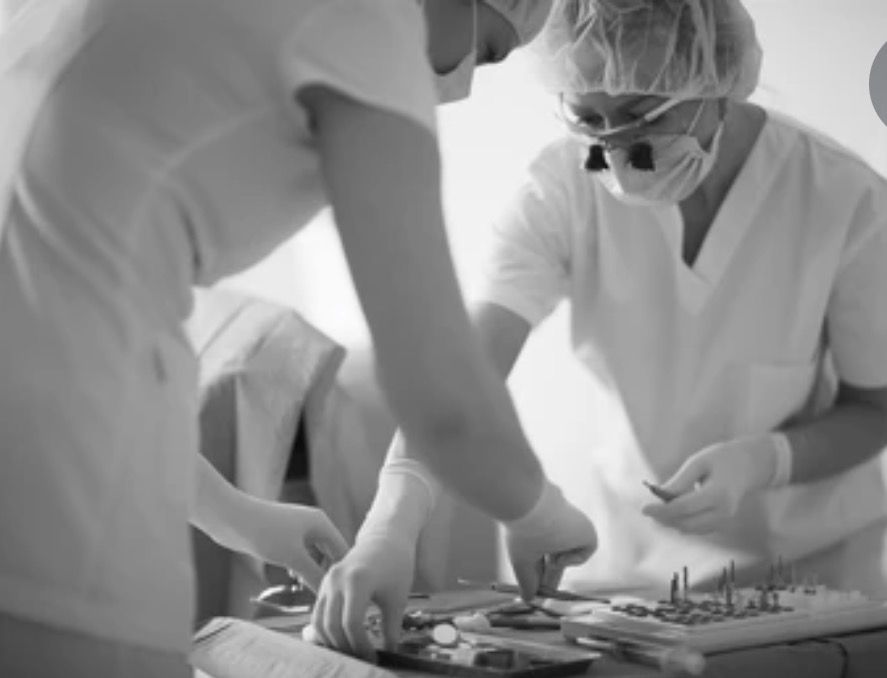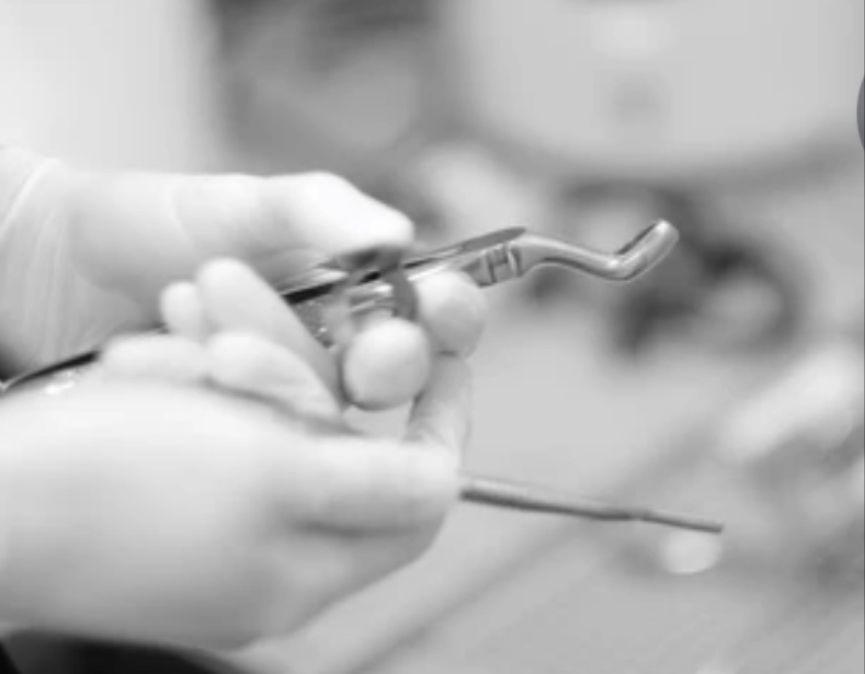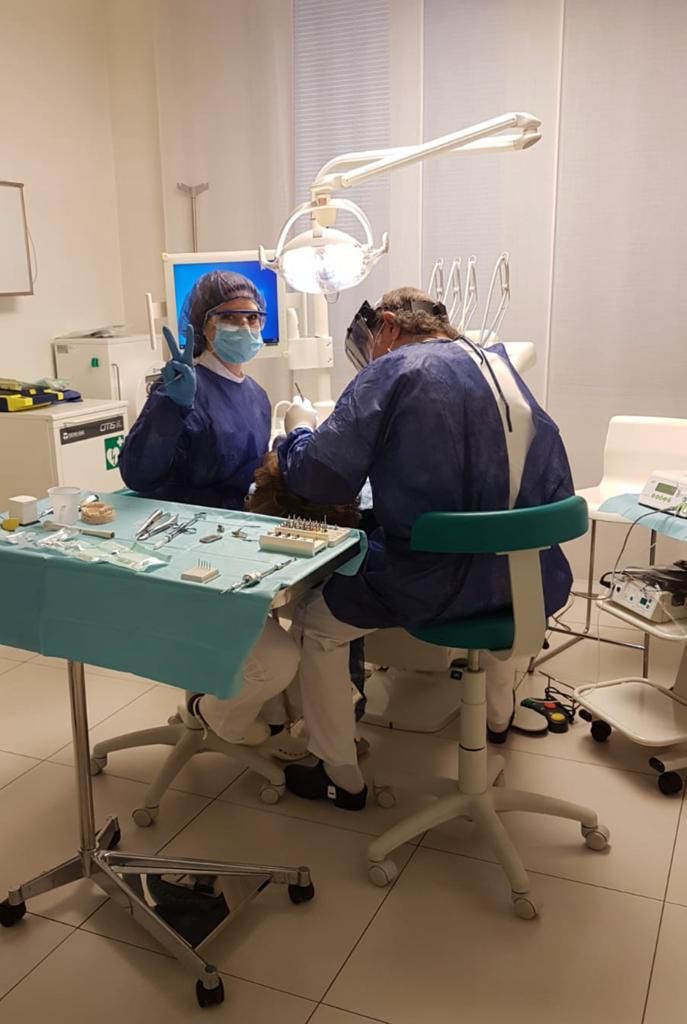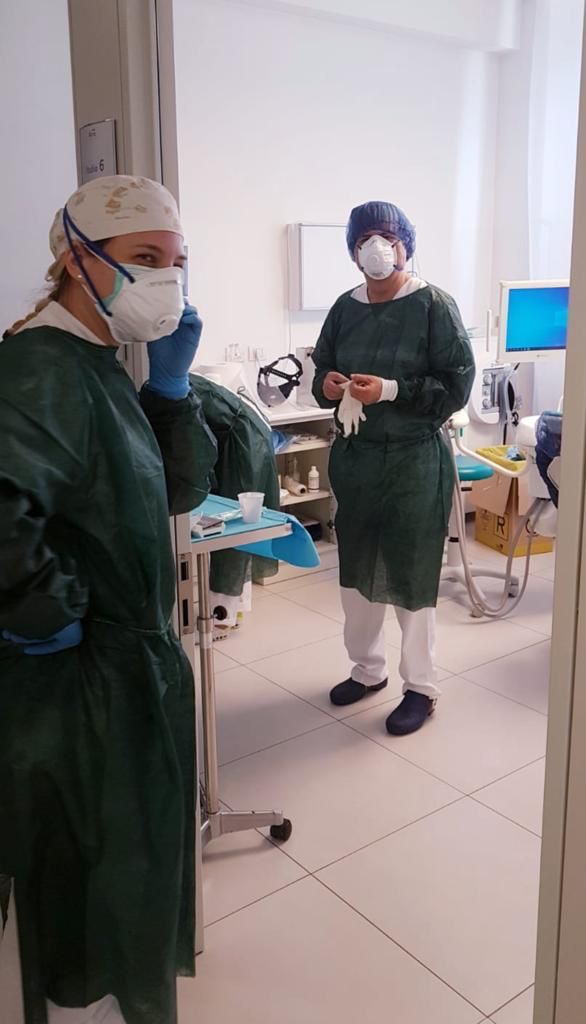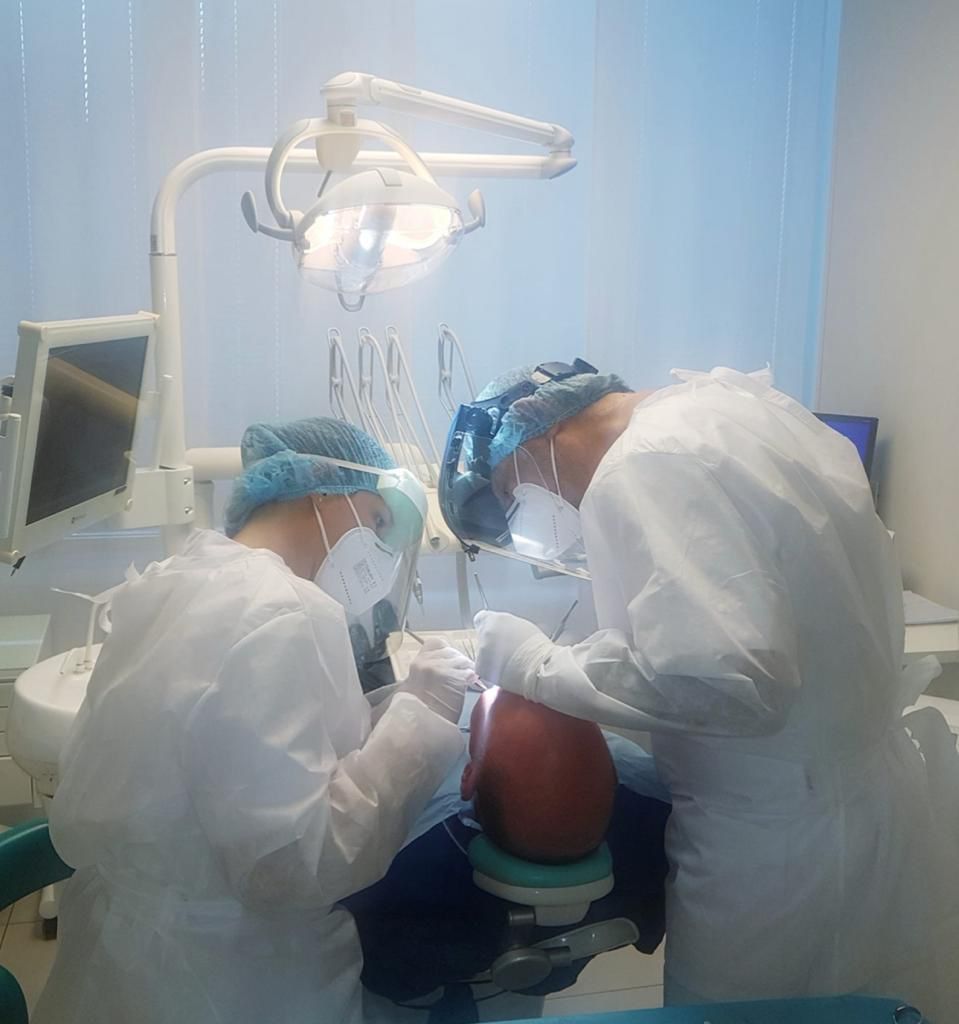Oral surgery includes a wide range of interventions performed, almost always, under local anesthesia such as:
- dental extractions;
- periodontology and implantology surgery;
- removal of cysts;
- apicoectomy;
- reconstruction and regeneration of maxillary bone volumes.
Currently, oral surgery is increasingly oriented towards a minimally invasive and very conservative approach, aimed at minimizing post-operative outcomes, thanks also to the use of very sophisticated equipment that industry and research have made available to dentists, such as various kinds of lasers, the magnetic mallet, piezo.
Dental extractions
Dental extraction is an operation that is necessary when a tooth is no longer recoverable due to:
- fracture;
- very deep caries;
- irreversible mobility following periodontal disease;
- orthodontic purposes.
Tooth extraction in total or partial osteomucosal inclusion probably represents the highest expression of the difficulties that an extraction can involve. In some cases, due to lack of sufficient space in the dental arch, some teeth, especially the wisdom teeth, remain partially or completely submerged in the gum bone, sometimes growing in the wrong direction. If this happens, chewing is useless and many problems can arise. Often a simple panoramic X-ray of the dental arches can be used to reveal the presence of impacted teeth. In the case of included canines, it is almost always possible to avoid its extraction by managing to recover the tooth by disincluding it and bringing it back into the arch with orthodontics.
Extraction of the wisdom tooth
When a third molar does not have enough space to erupt completely or is placed in an abnormal position, inflammation of the gum easily manifests itself, which takes the name of pericoronitis and is configured as a clinical picture defined as “third molar disodontiasis”.
Let us briefly recall that the moral thirds, absent in the infant’s dentition, begin between 18 and 25 years and it is not by chance that they are called wisdom teeth, an age in which all the dental elements are placed in a precise position. The impetuousness with which wisdom teeth erupt from the gums could cause toothache, dental crowding, and many other ailments, such as to require dental extraction. Among the effects caused by the appearance of wisdom teeth we find:
- difficulty and discomfort in swallowing;
- pain radiating to the ear;
- difficulty and discomfort in opening the mouth which remains more closed than usual;
- chronic toothache and inflammation.
The extraction of wisdom teeth is performed for preventive or curative purposes. In the first case, a wisdom tooth can be removed to safeguard the correct position and alignment of the other teeth, minimizing the risk of dental malocclusion and crooked teeth. In addition, an early extraction of wisdom teeth, immediately after their extrusion from the gum, may be recommended by the dentist to limit any risks and complications that could arise by removing a third molar already fully formed during adulthood. For therapeutic purposes, however, the extraction of wisdom teeth is inevitable when dental crowding occurs, which can make daily dental cleaning very difficult, when there is corrosion of the adjacent tooth that can cause inflammation and pain, when it is in severe tooth infection (tooth decay, pulpitis and abscess or wisdom tooth granuloma). A filling or devitalization is a useless practice for a wisdom tooth because, if you are in an abnormal position, it can cause difficult chewing and injuries to the mucous membrane of the cheeks.
Crown lengthening
Clinical crown lengthening is a type of oral surgery that is necessary in cases where subgingival dental pathologies develop, such as caries or fractures. Dental restorations (reconstructions or capsules), in fact, cannot be performed in a qualitative way if they invade the gums. The gummy smile or gingival smile can be experienced by the patient as a mere aesthetic problem and, also in this case, it is possible to resort to the crown lengthening solution, in order to establish a new balance between teeth and gingival surface. Correct alignment of the gingival parables gives harmony to a smile; an aesthetic reconstruction with veneers, prosthetic crowns cannot ignore a correct alignment of the gingival tissues. An anatomically short tooth, close to a long tooth, causes an unsightly effect that cannot be improved simply by intervening on the dental element, for example with a ceramic veneer. A realignment of the gingival parables becomes essential, which involves small programmed removals of tissue whose name is elongation of the dental clinical crown. The procedure involves lifting a surgical flap to expose the supporting bone of the affected teeth and removing a small amount of bone to create a space between the dental lesion and the bone. The gum is then repositioned and sutured to leave the carious lesion exposed and visible. After two or three weeks, once healing is complete, the caries can be treated as a filling. The clinical crown lengthening is applicable to the single tooth and to the entire dental arch.
Removal of cysts and benign lesions
Oral surgery also requires the removal of small benign lesions of the oral cavity and jaw bones such as cysts, fibroids, papillomas, odontomas, etc.
It is important to undergo periodic checks of the mucous membranes of the oral cavity, in order to early diagnose lesions that can degenerate (precancerous).
Apicoectomy
Teeth previously treated with incongruous and imprecise root canal therapies are often characterized by periapical lesions, often asymptomatic and caused by residual germs and infections, present within the canals of the dental elements. Apicoectomy is an operation that is followed by the endodontist, with the use of the operating microscope in order to resolve the infection, removing the infected portion of the root (apicoectomy), filling the remaining part of the root of the tooth (retrograde filling) and removing all infected tissues present in the bone around the tooth apex.
Pre-prosthetic surgery
Pre-prosthetic surgery is a type of surgery that allows you to eliminate or correct abnormal conditions, both gum and of the jaw bones, before rehabilitating the patient with a fixed or mobile prosthesis, thus preparing the oral cavity to better accommodate the new one. prosthesis. Patient bone graft membranes or biocompatible synthetic material are used.
